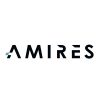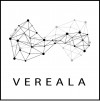In its comments on the Study for the Review of the List of Restricted Substances under RoHS 2 Directive (commissioned by DG Environment (European Commission); conducted by Environment Agency Austria), the Nanotechnology Industries Association (NIA) urged Environment Agency Austria to remove a general reference that categorises all nanomaterials as ‘substances of highest concern’ from its Study for the Review of the List of Restricted Substances under RoHS 2 Directive (Draft 1st Interim Report). The Agency had drafted the reference into ‘Step 2 Categorization/Prioritization of substances’, whose aim is described as identifying ‘those substances which are of high concern based on…information on nano-materials.’
NIA explained that the ‘wording implies that a dimension of 1 nm to 100 nm in at least one dimension alone...is sufficient to categorize a substance as one of ‘highest concern’. This assumption stands in contradiction to the reported results of other regulatory reviews and scientific studies’, and cites a 2009 SCENIHR report on Risk Assessment of Products of Nanotechnologies, as well as the 2nd Regulatory Review on Nanomaterials (COM(2012572), recently published by the European Commission; both reports conclude that ‘nanomaterials are similar to normal substances in that some may be toxic and some may not’.
NIA furthermore finds that the creation of lists of nanomaterials, as proposed in the Agency’s 1st Interim Report, interfered with the European Commission’s announced ‘impact assessment of potential reporting schemes of nanomaterials, described in its 2nd Regulatory Review on Nanomaterials.
Follow this link to download the NIA Comments on the Study for the Review of the List of Restricted Substances under RoHS2 (Draft 1st Interim Report) (drafted by the Environment Agency Austria).
Registered NIA Members can follow this link to download a NIA Briefing on the European Commission Study for the Review of the List of Restricted Substances under RoHS 2 Directive, including a summary of the nano-specific provisions in the proposed methodology.



















